Is this U.S.-China selloff a buy? A top Wall Street voice weighs in
Introduction & Market Context
Arq Inc (NASDAQ:ARQ) presented its first quarter 2025 earnings results on May 7, 2025, reporting significant year-over-year revenue growth and its first quarterly profit. Despite these positive developments, the company’s stock fell 7.29% following the earnings release, reflecting investor concerns about delays in its Granular Activated Carbon (GAC) production facility.
The environmental technology company, which produces activated carbon products for water, air, and soil purification, highlighted its unique position as the only fully domestic vertically integrated activated carbon producer in the United States. This positioning becomes increasingly valuable as new EPA regulations on PFAS (per- and polyfluoroalkyl substances) contamination are expected to drive substantial market growth.
Quarterly Performance Highlights
Arq reported Q1 2025 revenue of $27.2 million, a 25% increase compared to the same period last year. This growth was primarily driven by higher Average Selling Prices (ASP) and improved product mix and volumes. The company achieved a gross margin of 36.4%, nearly flat year-over-year, which it attributed to improved pricing offset by GAC startup costs and one-time accounting adjustments.
As shown in the following financial highlights slide, the company achieved net income of $0.2 million, a substantial improvement from a $3.4 million loss in Q1 2024:
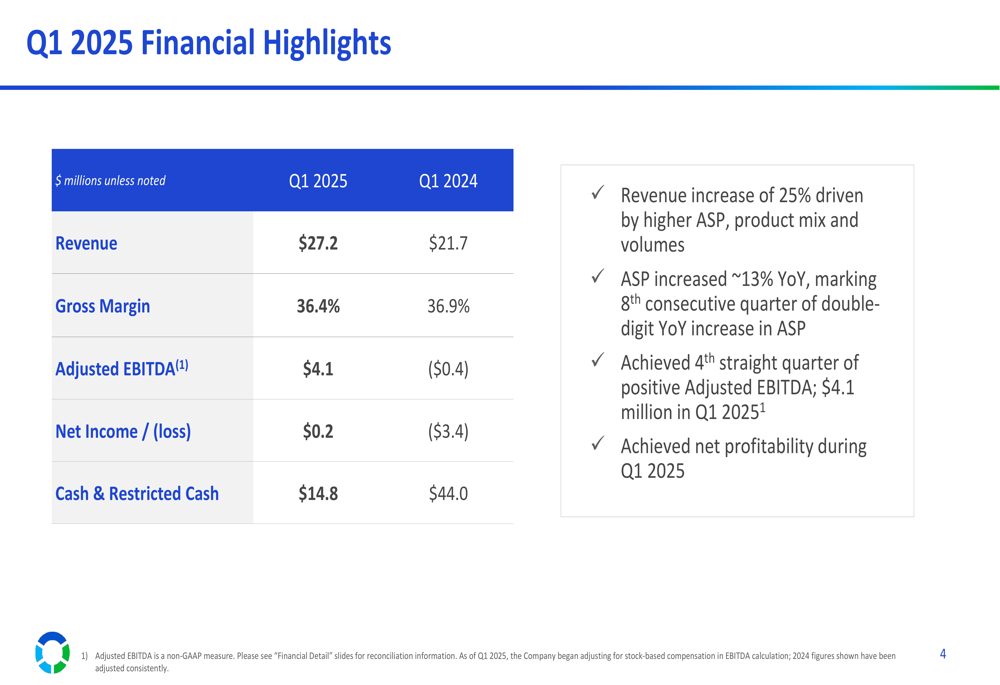
A key driver of Arq’s improved financial performance has been consistent price increases for its Powdered Activated Carbon (PAC) products. The company reported its eighth consecutive quarter of double-digit year-over-year ASP increases, with a 13% rise in Q1 2025. This pricing strategy has helped eliminate loss-making contracts and establish a sustainable foundation for the business.
The following chart illustrates this consistent pricing growth trend:
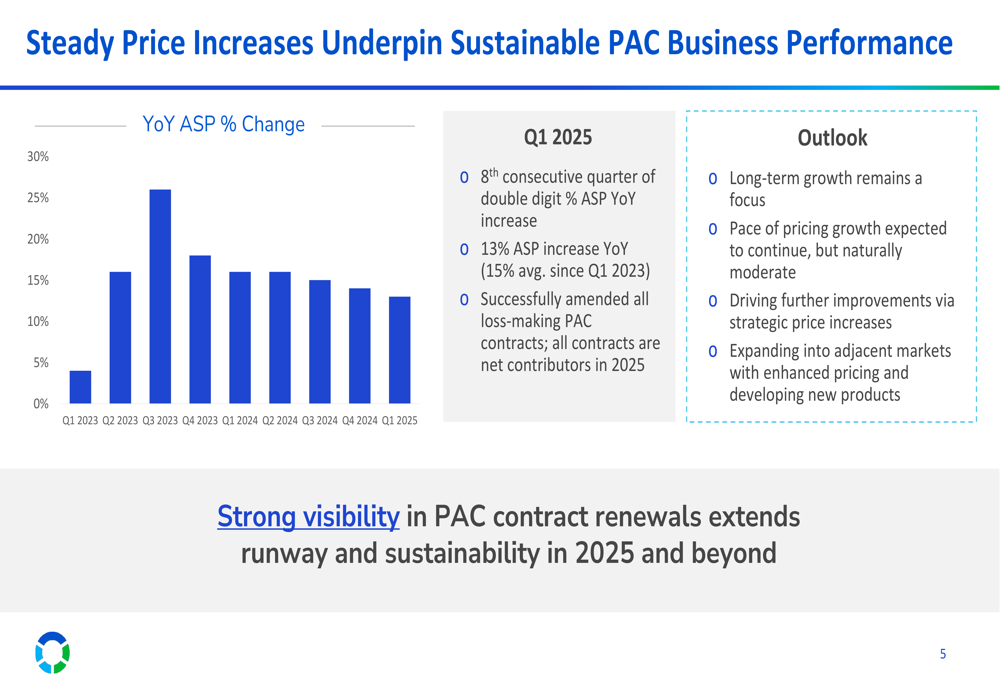
Adjusted EBITDA reached $4.1 million in Q1 2025, compared to a loss of $0.4 million in the prior year period, marking the fourth consecutive quarter of positive Adjusted EBITDA. The company also noted that 100% of its PAC contracts are now net cash producers, with all negative margin contracts eliminated.
Strategic Initiatives
The Red River facility expansion represents Arq’s most significant strategic initiative, adding GAC production capabilities to complement its existing PAC business. This project is expected to deliver an additional 25 million pounds of GAC product capacity, with approximately 16 million pounds already contracted at attractive pricing.
The following slide details how the Red River project is driving Arq’s corporate transformation:
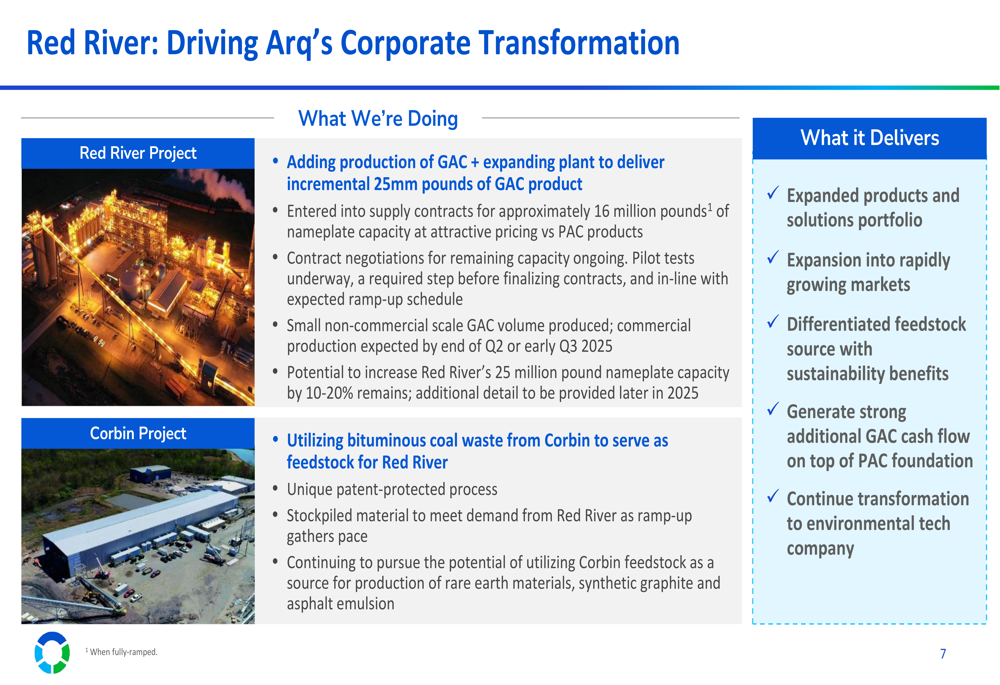
While the company achieved mechanical completion of the GAC facility in January 2025, commercial production has been delayed. Small volumes of GAC have been produced, but not yet at the consistency necessary for commercial sales. Arq now anticipates first commercial-scale production by the end of Q2 or early Q3 2025.
The company provided this update on the GAC development progress:
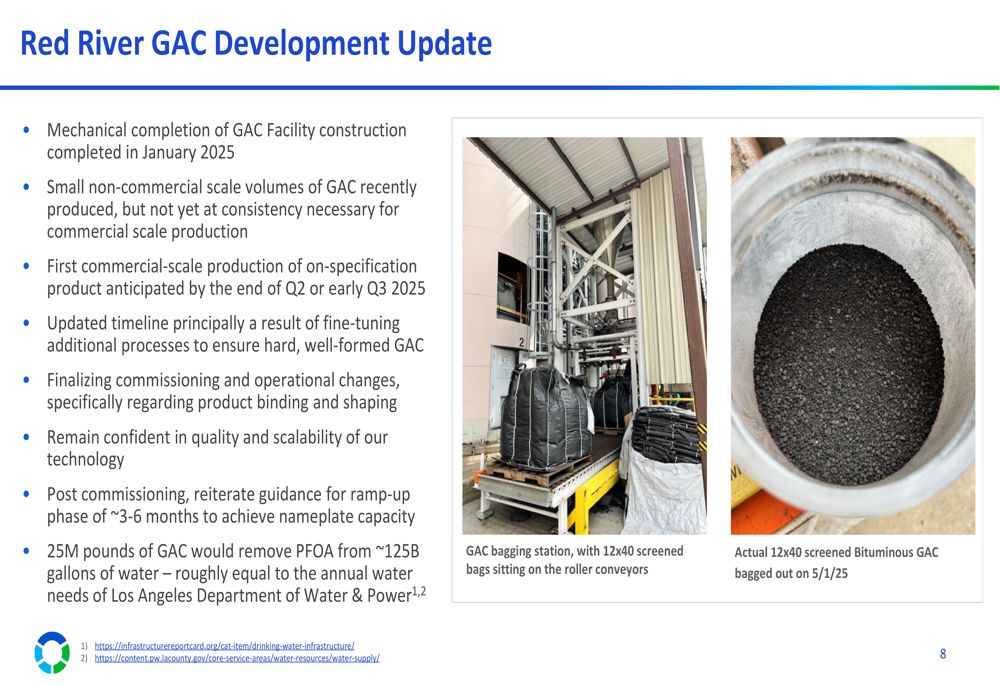
This timeline extension appears to have contributed to the negative market reaction, despite the positive financial results. Investors seem concerned about potential further delays and the impact on revenue growth expectations.
Competitive Industry Position
Arq emphasized its advantageous position in the activated carbon market, particularly as EPA regulations on PFAS contamination create substantial new demand. In April 2024, the EPA established National Primary Drinking Water Regulations requiring drinking water to be below certain maximum PFAS levels within five years.
The company estimates these regulations could increase municipal water market demand by 3-5 times versus the existing approximately 170 million pound per year market:
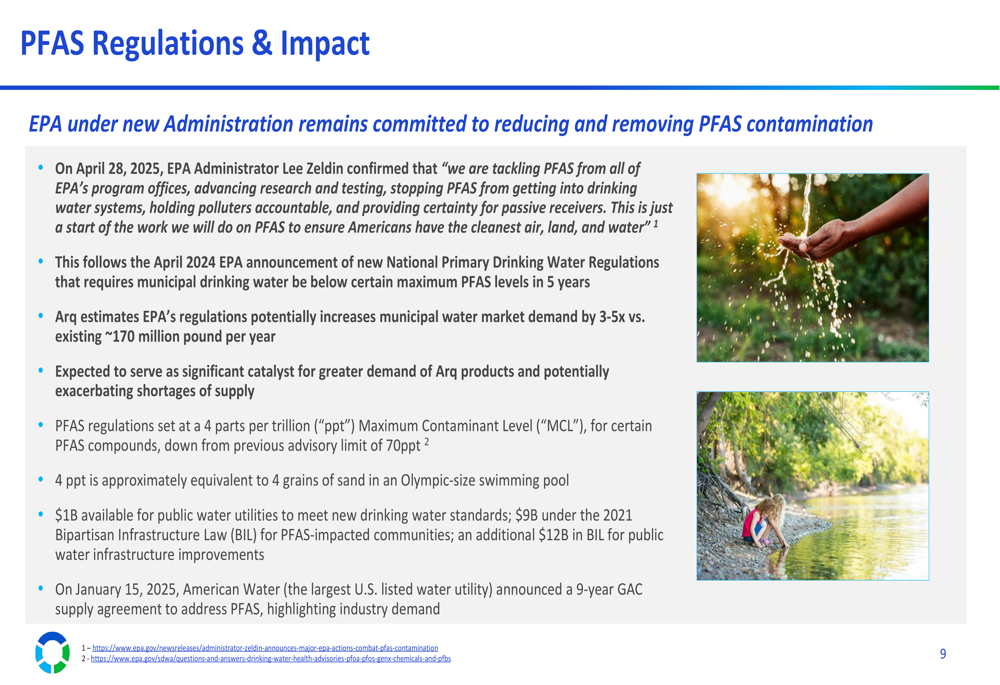
As the only domestic producer with a fully integrated activated carbon supply chain, Arq believes it is uniquely positioned to benefit from current U.S. tariffs on imported carbon products. Many competitors face headwinds due to dependencies on imported feedstock, while Arq’s domestic supply chain provides a competitive advantage.
The company also highlighted the projected supply-demand imbalance in the North American GAC market, with demand expected to significantly outpace supply in the coming years:
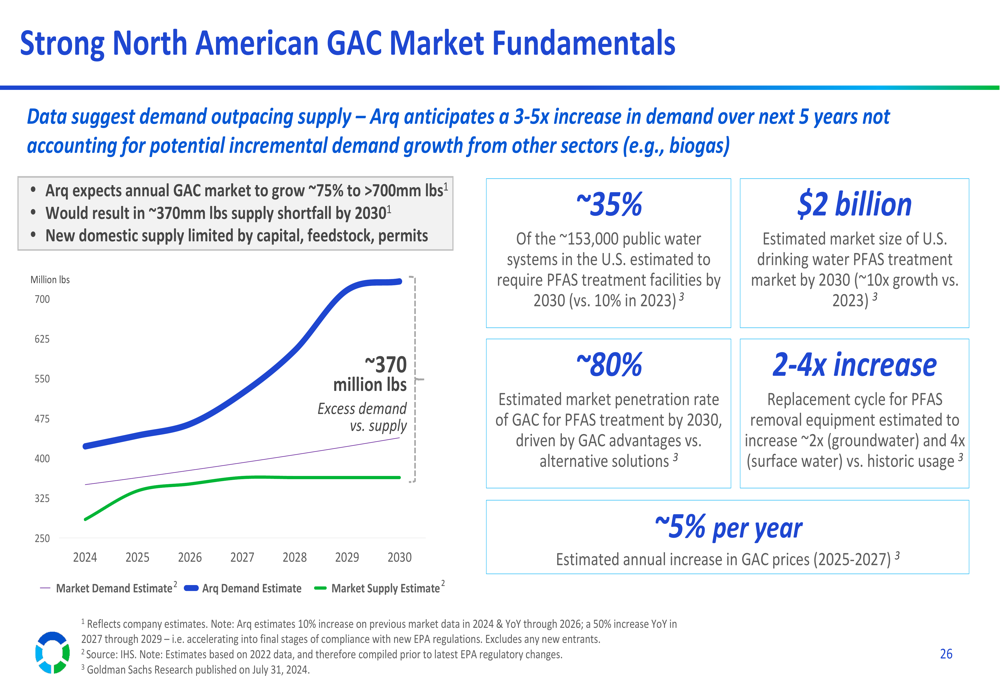
Forward-Looking Statements
Looking ahead, Arq outlined several near-term priorities, including optimizing its PAC business, commencing and ramping production at the Red River GAC facility, concluding negotiations for the remaining GAC capacity, and funding attractive investments using its current balance sheet.
The company is also exploring growth opportunities beyond activated carbon, including applications in asphalt, synthetic graphite, rare earth elements, biodegradable agricultural film, and metallurgical coal. These initiatives are part of Arq’s broader strategy to position itself as an environmental technology company with diversified revenue streams.
For 2025, capital expenditures are forecasted to be between $8 million and $12 million, with the company’s cash position standing at $14.8 million as of March 31, 2025, down from $44.0 million a year earlier. This significant reduction in cash reserves may raise questions about the company’s ability to fund future growth initiatives without additional financing.
Despite the positive quarterly results, Arq’s stock price declined following the earnings release, suggesting investors remain cautious about the company’s execution of its growth strategy, particularly regarding the delayed timeline for commercial GAC production. The stock closed at $4.25 on the previous day and fell 7.29% following the earnings announcement, continuing to trade well below its 52-week high of $8.11.
Full presentation:
This article was generated with the support of AI and reviewed by an editor. For more information see our T&C.
